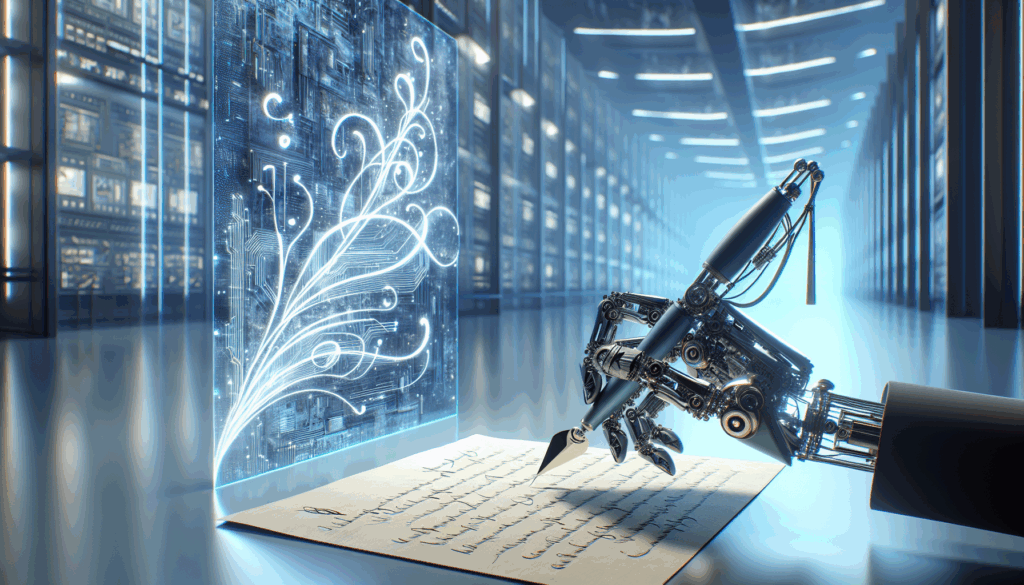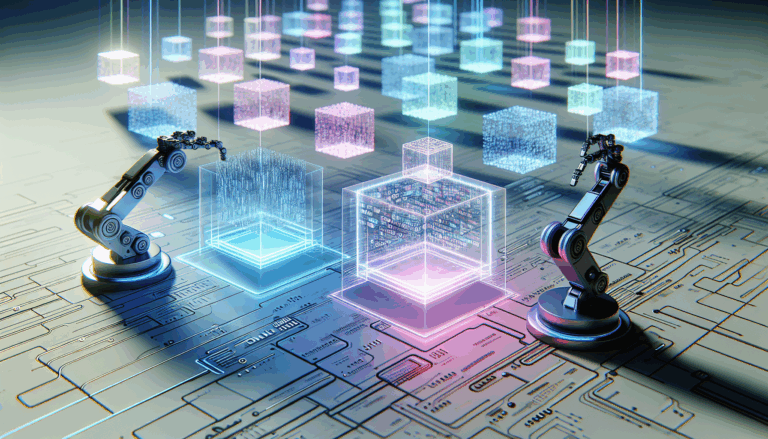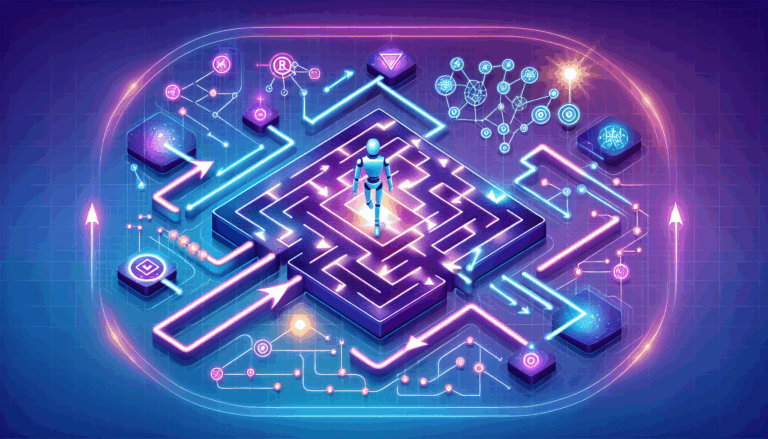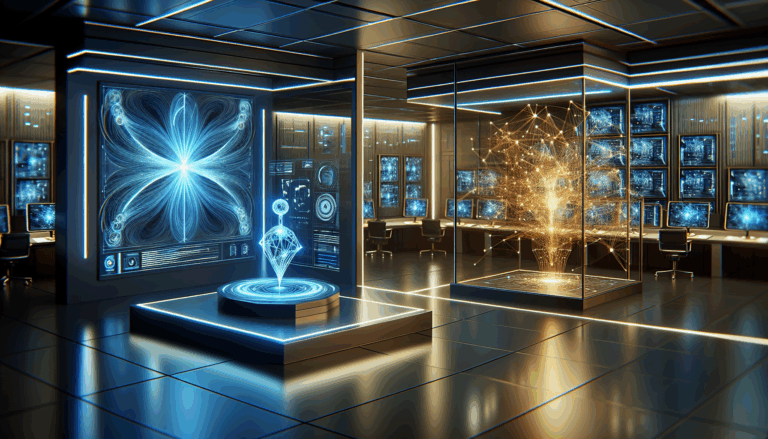Understanding AI-Powered Handwriting Recognition
At its core, AI-powered handwriting recognition is a technological marvel that bridges the gap between analog writing and modern digital workflows. Using advanced artificial intelligence algorithms, these systems can accurately interpret and convert handwritten notes, forms, or documents into editable, searchable digital text. This breakthrough is redefining how educators, businesses, and individuals manage handwritten information.
The process typically starts with digitizing the handwritten content, often through a scanner, a dedicated note-taking device, or even a smartphone camera. The captured image is then analyzed by machine learning models—particularly neural networks trained extensively on varied handwriting samples. These AI models learn to identify the shapes and patterns of letters, numbers, and symbols, even when confronted with the subtle idiosyncrasies of different people’s penmanship.
Two core technologies drive this transformation:
- Optical Character Recognition (OCR): Traditional OCR converts printed text to digital, but modern systems incorporate machine learning to handle the variability and complexity of human handwriting. Recent studies demonstrate that deep learning-based OCR systems now surpass conventional methods in accuracy, particularly with cursive or stylized scripts.
- Natural Language Processing (NLP): After handwritten characters are recognized and digitized, NLP tools ensure the resulting text is coherent and contextually accurate. This step is vital for minimizing errors, correcting misspellings, and making sense of ambiguous characters based on the surrounding words. IBM’s NLP overview offers more insight into these linguistic capabilities.
The recognition process doesn’t stop at simple transcription. Leading solutions use feedback loops, continuously improving their accuracy by learning from new handwriting styles and unique user inputs. For example, Google’s Handwriting Recognition Project leverages millions of annotated samples to manage the immense diversity in global handwriting.
Imagine a doctor writing notes on a tablet: the AI recognizes not just text, but also medical abbreviations and context, ensuring vital information is digitized quickly and accurately. Similar models help students convert lecture notes or enable archival centers to digitize centuries-old manuscripts—a task that was almost impossible before AI advancements.
With AI continuously evolving, handwriting recognition systems are becoming more adaptive, user-friendly, and reliable. For those eager to explore the technical details or try examples, Microsoft’s Azure Form Recognizer provides resources and demos illustrating real-world applications.
How Handwriting-to-Text Conversion Technology Works
AI-powered handwriting-to-text conversion is a fascinating blend of computer vision, artificial intelligence (AI), and advanced pattern recognition techniques. At its core, the process involves translating analog, handwritten content into editable digital text—a technology that is transforming the way we interact with both historical and contemporary written materials.
The journey from pen to pixel begins with the acquisition of a handwritten sample. This can be anything from scanned notes, assignments, and historical manuscripts to photos of whiteboard scribbles or forms. Specialized image preprocessing techniques like binarization, noise reduction, and normalization are first applied to ensure the clarity and uniformity required for further analysis. For example, a scanned image may contain shadows, skewed lines, or background artifacts, all of which are corrected to provide a clean slate for the next phases.
Once the image is ready, AI models—especially those based on convolutional neural networks (CNNs) and recurrent neural networks (RNNs)—step in. These neural networks have been trained on massive datasets containing thousands or millions of handwritten characters, allowing them to distinguish between subtle variations in writing styles. The process can be broken into the following steps:
- Segmentation: The system divides the page into individual letters, words, or lines using sophisticated algorithms. This step is crucial for languages or scripts where characters are often connected, such as cursive English or Devanagari.
- Feature Extraction: Each segment is analyzed for distinguishing features like shape, curvature, orientation, and relative position. Advanced models use learned features rather than hand-coded ones, increasing flexibility and accuracy.
- Character Recognition: At this stage, the AI compares extracted features with those it has learned during training, identifying the most likely characters. Deep learning enables systems to recognize complex patterns and even adapt to unfamiliar handwriting.
- Post-Processing: After initial recognition, the system applies language models and contextual analysis to correct errors and improve output. For example, if unclear handwriting produces the text “hte”, a natural language processing (NLP) component can infer that “the” is more probable in a given sentence structure.
This technology is capable of much more than mere “transcription.” Modern systems incorporate feedback loops, continuously improving by learning from user corrections and expanding their databases. Some solutions even support multilingual conversion, adapting to the nuances of different scripts worldwide (Microsoft Research).
For users, these advancements have turned once-laborious manual data entry into a seamless, instantaneous process. Educators can digitize handwritten classroom notes with ease, archivists can preserve historical documents efficiently, and everyday users can capture the contents of notebooks on-the-go. For a deeper technical dive, refer to the research by ScienceDirect and recent studies in handwriting recognition published in peer-reviewed journals.
Benefits of Digitalizing Handwritten Notes
Digitalizing handwritten notes transforms static paper documents into searchable, shareable, and easily organized digital content, unlocking a multitude of advantages for individuals and organizations alike. Below are several key benefits, each supported by detailed explanations, real-world examples, and authoritative resources.
-
Enhanced Accessibility and Organization
Once handwritten notes are converted into digital text, they become instantly more accessible. Students, researchers, and professionals can retrieve archived notes from any device, provided they’re stored in the cloud or a digital platform. For example, a medical professional can swiftly search for and reference past notes about patient cases, drastically reducing the time spent flipping through paper notebooks. According to a white paper from IBM, digitization also reduces the risk of data loss due to physical damage or misplacement. Digital filing systems allow for easy categorization and tagging, ensuring that important information is never more than a few keystrokes away.
-
Improved Collaboration and Sharing
Digital documents can be instantly shared with colleagues, classmates, or collaborators worldwide. For example, teachers can distribute their handwritten lecture notes to students, or teams can share handwritten brainstorms as editable documents during project kickoffs. In the business realm, converting meeting notes to digital form helps teams maintain transparent, up-to-date records. Tools such as Google Workspace and Microsoft OneNote facilitate real-time collaboration and annotation, fostering a collaborative culture and reducing version control headaches.
-
Effortless Searchability and Indexing
Handwritten notes are notoriously difficult to search. Once digitized, advanced AI-powered text recognition enables users to search for keywords, phrases, or dates across thousands of pages in seconds. Consider an architect trying to recall a specific client comment written months earlier. Digital text conversion enables keyword searches, instantly pinpointing the required information. Scholarly resources from ScienceDaily indicate this boosts productivity and aids memory retention by making retrieval intuitive and fast.
-
Integration with Digital Tools and Workflows
Digital notes seamlessly integrate with productivity tools such as calendars, project management apps, and email platforms. For instance, action items in meeting notes can be automatically fed into a task management app like Asana, ensuring nothing is overlooked. This integrative capability is critical in industries where keeping information siloed can lead to inefficiencies or errors.
-
Long-Term Preservation and Security
Paper degrades and can be lost, stolen, or destroyed. Digital archives eliminate these risks with the help of cloud storage services and encrypted backups. For historical researchers or legal professionals who rely on precious handwritten records, digitizing ensures the longevity and preservation of content for generations. The Library of Congress provides best practices on safeguarding digital archives, underscoring the importance of this benefit.
Converting handwritten notes into digital text not only preserves the original content but also amplifies its value by making it accessible, secure, and actionable. Integrating AI-driven handwriting recognition promises even greater accuracy and efficiency for individuals and organizations adapting to the digital age.
Key Applications Across Different Industries
AI-powered handwriting to digital text conversion is transforming workflows and possibilities across a range of industries. Below, we explore several key sectors embracing this powerful technology, complete with industry-specific benefits, steps, and real-world examples.
Healthcare
Medical professionals frequently record patient notes, prescriptions, and case histories manually. By integrating AI handwriting recognition, hospitals and clinics can:
- Digitize handwritten prescriptions: Reduce errors due to illegible handwriting and integrate directly with electronic health records (EHR).
- Automate record-keeping: Convert doctors’ handwritten notes into digital format for better organization, search, and compliance with privacy laws like HIPAA (learn more).
- Example: A clinic can equip doctors with tablets to jot down patient notes, instantly converted to text and saved in secure digital files, allowing for seamless sharing and retrieval.
Education and Academia
From grading exams written on paper to digitizing historical manuscripts, educational institutions leverage AI to:
- Streamline assessment: Automatically convert student answer sheets into text, enabling faster and fairer grading. This is especially useful in large-scale standardized testing (ETS: Educational Testing Service).
- Preserve valuable content: Universities can use AI to digitize centuries-old handwritten documents, making them searchable, accessible, and preserved for future research (British Library Digitized Manuscripts).
- Support learning diversity: Students who prefer handwriting can take notes as usual, later converting them to editable, organized text formats for studying or collaboration.
Financial Services
Banks and insurance companies handle vast quantities of handwritten forms – from customer onboarding forms to checks.
- Facilitate onboarding: Instantly convert handwritten account opening forms or loan applications into digital entries, minimizing manual data entry and human error.
- Automate check processing: AI can interpret handwritten checks, allowing for faster clearing and fraud detection (NACHA: The Electronic Payments Association).
- Example: A bank can scan handwritten deposit slips, leveraging AI to recognize the script and automatically log the data into their core banking system.
Legal Sector
Law offices manage handwritten contracts, notes from depositions, and client correspondences. AI conversion tools help to:
- Digitize evidence: Convert handwritten case notes into digital documents for secure archiving and easy searches (ABA: The Case for Handwriting Recognition).
- Streamline workflows: Attorneys can quickly dictate or draft handwritten motion notes, converting them into formatted legal documents.
- Enhance collaboration: Share digitized notes across teams and departments, improving case preparation and client service.
Public Administration & Government
Many government processes—ranging from census data collection to public feedback—rely on handwritten forms.
- Modernize records: Seamlessly transfer handwritten data into centralized digital systems, improving transparency and efficiency (NIST: Handwriting Recognition Projects).
- Disaster response: Field officers can locally record handwritten notes during emergencies and convert them to text, supporting real-time coordination and resource allocation.
- Example: During a public survey, officials use mobile devices to capture handwritten responses, which are instantly digitized and analyzed for faster policy decisions.
As AI handwriting conversion tools continue to evolve, they promise to boost productivity, accuracy, and data accessibility across countless other sectors, fostering innovation and operational excellence.
Challenges in Handwriting Recognition and How AI Overcomes Them
Handwriting recognition is a complex problem involving more than simply distinguishing between printed and cursive scripts. Each person’s unique writing style, inconsistencies in slant, pressure, shape, and even the presence of stray marks contribute to the challenge. Let’s explore the key challenges in handwriting recognition and how modern artificial intelligence (AI) techniques are addressing them.
Variability in Handwriting Styles
Traditional rule-based OCR (Optical Character Recognition) systems often fail to generalize across different handwriting because of the tremendous variability in letter shapes, sizes, and the way characters are connected. Think about how the same letter “a” can appear looped, open, slanted, or even closed depending on the individual. This variability requires systems capable of learning from vast and diverse handwriting samples.
AI overcomes this by leveraging Convolutional Neural Networks (CNNs), which excel at recognizing spatial hierarchies in images. These networks are trained on large datasets containing thousands of handwriting samples, allowing them to learn general features like curves and intersections as well as the idiosyncratic styles of various writers. Google’s Cloud Vision API is a leading example, using deep learning to adapt and improve its accuracy across different scripts and styles.
Dealing with Noise and Degraded Documents
Handwritten notes are often plagued by low-quality scans, ink smudges, or paper creases. These artifacts can obscure or distort letters, making traditional recognition algorithms prone to errors. AI-powered systems, however, use advanced image pre-processing and denoising techniques to clean up input.
- First, the system typically applies image binarization and filtering to separate the writing from the background.
- Next, CNNs or Recurrent Neural Networks (RNNs) analyze the cleaned images, looking for patterns that match learned representations of handwriting, even when parts of the text are obscured or incomplete.
The result is much higher resilience to noise, as demonstrated in projects like IAM Handwriting Database-based AI models, which perform well even on degraded manuscript pages.
Understanding Context and Ambiguity
One profound issue in handwriting recognition is ambiguity between similar-looking letters, such as “l” and “1”, or “o” and “a”. This is especially problematic when analyzing isolated words or characters. Contextual understanding is crucial here.
Modern AI models employ techniques from the field of Natural Language Processing (NLP), using language models to predict the most likely word sequence. For example, recognizing that “cat” makes far more sense than “cqt” in a sentence. Advanced AI tools, such as Google’s BERT and OpenAI’s GPT series, are now being integrated into handwriting recognition engines to make context-aware predictions that significantly boost accuracy in real-world scenarios.
Multi-Lingual and Script Recognition
In a globalized world, handwriting recognition needs to be capable of processing not just the Latin alphabet, but also scripts like Cyrillic, Chinese, Arabic, and more. Each language and script presents unique challenges in character complexity, directionality (right to left vs. left to right), and ligatures (joined letters).
AI addresses this through transfer learning and multi-task learning, allowing a model trained on one script to adapt quickly to another. Google’s Cloud Vision API and Microsoft’s Ink Recognition service are prominent examples that support dozens of scripts and languages, making use of massive multilingual datasets.
Continuous Improvement Through User Feedback
Unlike static software, AI-powered handwriting recognition systems continuously learn from user corrections. For instance, when a scanned note is misread and a user manually corrects the output, that correction can be fed back into the system to refine its learning process.
This feedback loop, known as reinforcement learning, is crucial for improving accuracy over time — especially for unique or rare handwriting styles. Integration of real-time feedback mechanisms has made AI solutions increasingly robust and adaptable.
For a comprehensive look at state-of-the-art research and datasets driving these advancements, platforms such as arXiv and The Computer Journal provide in-depth academic resources.
Latest Advancements in AI Handwriting Conversion Tools
Recent years have seen remarkable progress in the field of AI-powered handwriting conversion, driven by advances in neural networks and pattern recognition algorithms. These advancements are reimagining how handwritten notes, scanned documents, and even historical manuscripts are translated into editable, searchable digital text.
Deep Learning Models Enhancing Accuracy
The shift from traditional OCR (Optical Character Recognition) to deep learning algorithms such as Convolutional Neural Networks (CNNs) and Recurrent Neural Networks (RNNs) has elevated conversion accuracy. These models are adept at understanding context, language structure, and even unique handwriting styles. For example, Google’s Handwriting Recognition leverages deep learning to automatically segment lines, words, and characters for more reliable conversion results, overcoming issues like irregular spacing or slanted writing.
Multilingual and Multiscript Support
Modern AI handwriting tools no longer restrict users to mainstream languages or scripts. State-of-the-art models, such as those employed by Microsoft’s Azure Cognitive Services, can interpret dozens of languages and even manage mixed-script documents—something nearly impossible with classic OCR. This empowers global teams and researchers to digitize content in their native languages, broadening accessibility and collaboration.
Contextual Learning for Personalization
Newer tools incorporate user feedback and adaptive learning. As users correct conversion errors, the AI refines its understanding of individual handwriting patterns. Noteworthy examples include MyScript Nebo, an application that continuously customizes its recognition engine for each user. The result is a tailored experience where conversion accuracy improves the more a person writes and interacts with the tool.
End-to-End Workflows for Seamless Integration
Instead of isolated conversion stages, advanced AI platforms provide end-to-end solutions that automate scanning, recognition, verification, and cloud storage. For example, Adobe’s Handwriting to Text service is designed to let users scan handwritten notes with a smartphone and export them directly to formats like Word or PDF, integrating easily into existing digital, academic, or business workflows.
Real-Life Use Cases
– Education: Students and teachers can rapidly digitize handwritten lecture notes or assignments, making organization and sharing effortless.
– Healthcare: Medical professionals often rely on handwritten notes. AI-powered solutions streamline electronic recordkeeping, reducing errors and improving patient care, as highlighted in studies by the National Institutes of Health.
– Heritage Preservation: Researchers use AI to convert handwritten archives and manuscripts, a process instrumental for digital libraries and historical research.
For those eager to dive deeper into the technology, the MIT Technology Review offers an insightful overview in their feature on AI and handwriting recognition.




